When my son was in grade school, he begged to plant a vegetable garden. I thought it was a great idea; it would get him outdoors and get his hands in the dirt. I diligently tilled a patch of our lawn. We planted tomatoes, lettuce, string beans and green peppers. There was only one problem: my kid was a carnivore and quickly lost interest in our homegrown vegetarian fare.
The next summer, the weeds were chest high, so we turned the garden back to grass. In the process, I discovered stringy vine-like roots, which I yanked out with the rest of the tangled mess.
“I hope you were wearing a long-sleeved shirt,” said my husband when I mentioned the roots. “That might be poison ivy.”
“In our lawn?” I replied doubtfully. “I’m not allergic to it anyway.”
A week later, itchy, oozing blisters erupted all over my arms, torso and neck. The plant’s roots, which had laid dormant under our lawn, beaten back by the mower, had given me my first case of “urushiol-induced contact dermatitis”.
Until the rash disappeared, I was the family pariah. No one wanted to get near me for fear of contracting my malady. They needn’t have worried. I would only have been contagious if I had failed to shower after my anti-gardening exploits. (The blisters contain only water.)
How you get the rash without touching the plant is only one misconception about this toxic plant. There are more:
-
Myth #1: Poison ivy and its cousins, poison oak and poison sumac, are the only poison plants in the United States that cause an itchy rash.
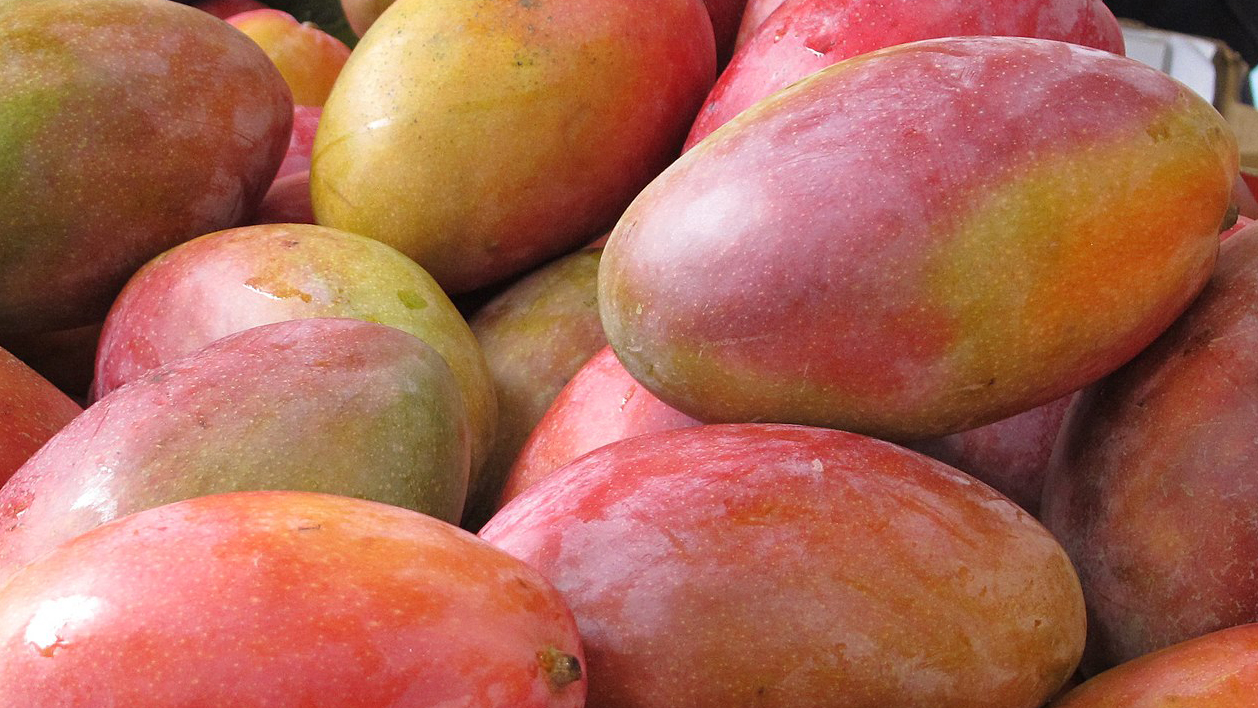
Mangoes in a farmer’s market. By Snapdragon66 [CC BY-SA 4.0] from Wikimedia Commons Poison ivy grows in every state except for Alaska and Hawaii, but you can still get a similar rash in Hawaii if you rub mango skins against your body. You can also get blisters on your lips if you eat the sweet fruit directly off the rind.
Poison ivy and mangoes belong to the Anacardiaceae family. Other plants in this family, such as cashews, also produce a rash-inducing oil. All cashew nuts are shelled and cooked before they arrive at the grocery store, which neutralizes their rash-inducing toxin. Unfortunately, the urushiol oil in poison ivy is resistant to heat.
Interestingly, pistachios, another member of the Anacardiaceae family, doesn’t cause a rash.
-
Myth #2: Animals naturally avoid poison ivy because they sense it’s toxic to touch.
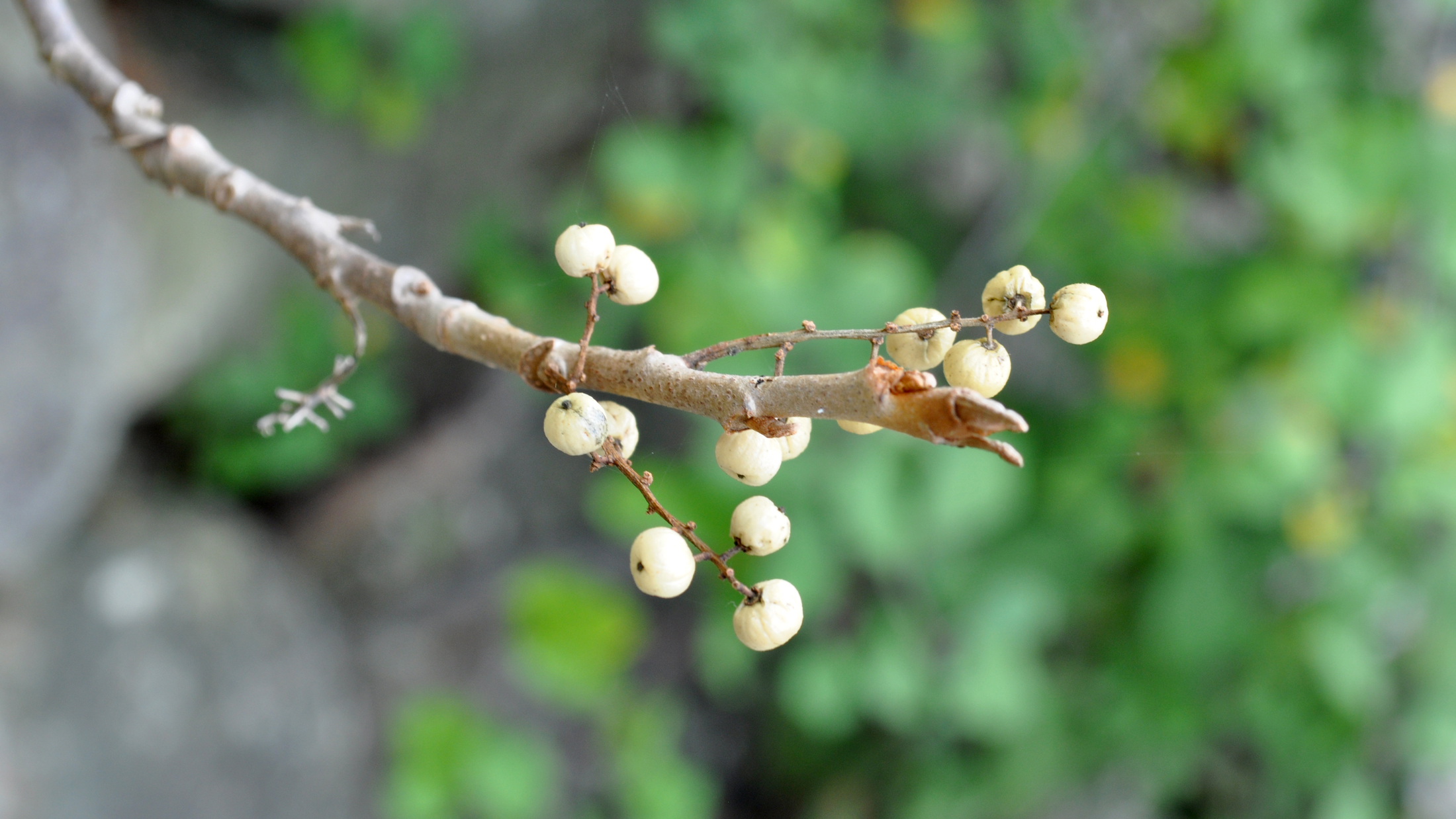
Poison ivy berries. Photo © Lisa Ballard Both mule deer and whitetail deer, who are primarily browsers, seek leafy plants, including poison ivy. According to the South Carolina Department of Natural Resources, birds, including catbirds, chickadees and wild turkeys, sup poison ivy’s smooth, white berries, particularly during the winter when food is scarcer. Black bears, wood rats, raccoons and muskrats also eat the plant’s stems and leaves, and toads hide under it.
Animals may not react to poison ivy, but they can give it to humans. This toxic weed flourishes in open woodlands, especially alongside openings, like footpaths, where it can get sunshine yet not get crushed by hiking boots. If you go hiking with your dog and he romps through a patch of poison ivy, then you pet your dog, your hands pick up the urushiol oil. Until you wash them, any bare skin on your body that you touch can get the rash, and any article of clothing or gear can transfer the itchy toxin to another part of your body or to someone else.
-
Myth #3: If you don’t see three leaves, it’s not poison ivy.
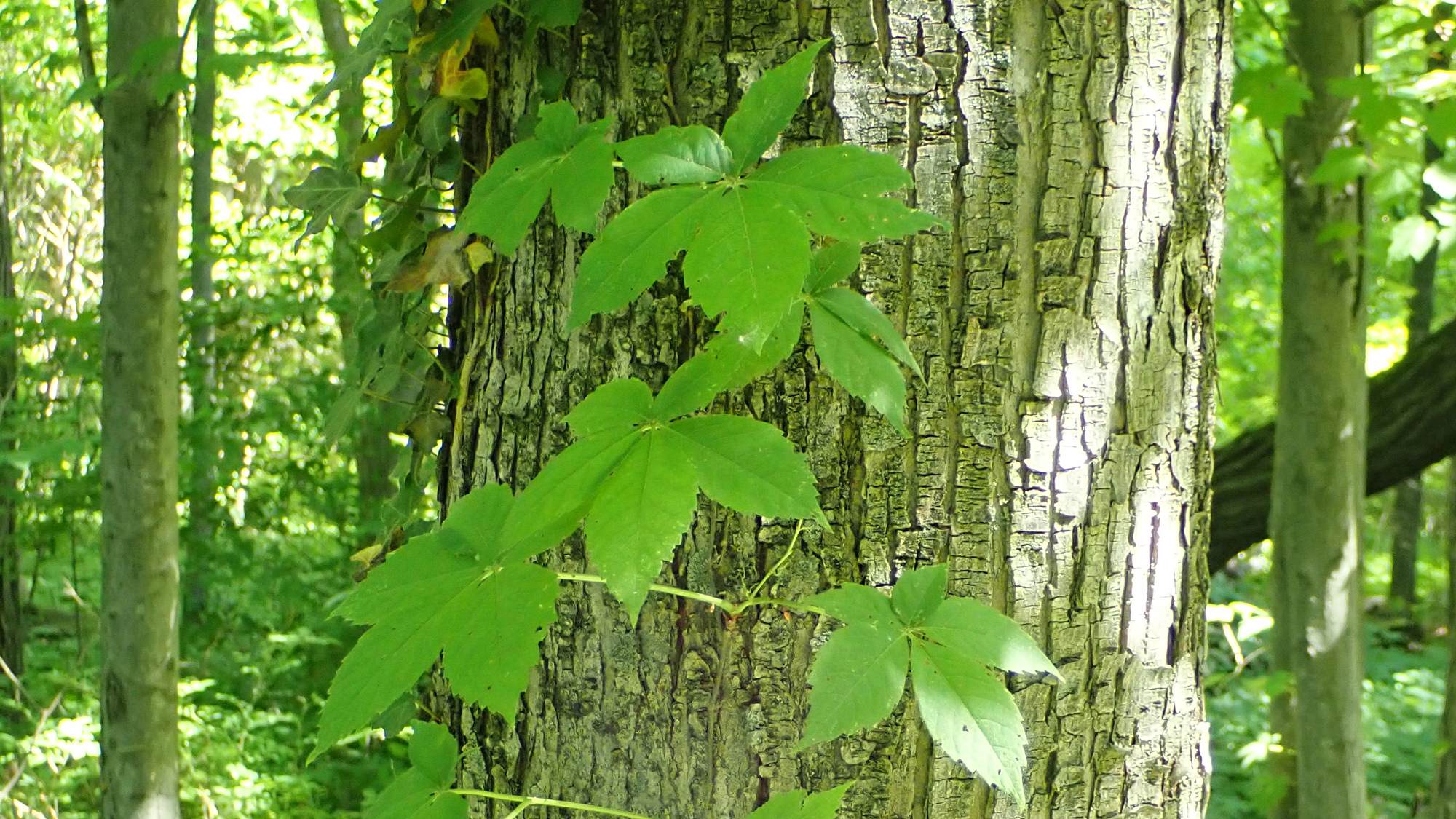
Virginia creeper vine. Photo © Lisa Ballard While the mantra, “leaves of three, let it be”, helps identify poison ivy, which has three toothed, heart- or almond-shaped leaves growing from one point on a stalk, every part of the plant can cause a reaction, including the stems, berries and roots as I inadvertently discovered.
When poison ivy first comes up in the spring, it looks dark red and glossy. The leaves quickly turn the same green as other leaves in a deciduous forest, but if you look closely, there may be tinges of red where the leaves come together. Then, in the fall, they put on a showy display of reds and yellows on par with any maple tree.
This tenacious plant can grow as a stand-alone perennial, shrub, ground cover or vine. As a vine, it sprouts thousands of brown hairs that grasp the bark of its host tree. As it climbs toward the canopy and matures, its stem gets woodier and increases in diameter, up to several inches thick, as if a second tree has grown up hugging the original one.
People often confuse Virginia creeper with poison ivy, but Virginia creeper has five leaves, not three. You don’t want to bathe in Virginia creeper either. Its sap can also cause an annoying rash.
-
Myth #4: I’m not allergic to poison ivy.
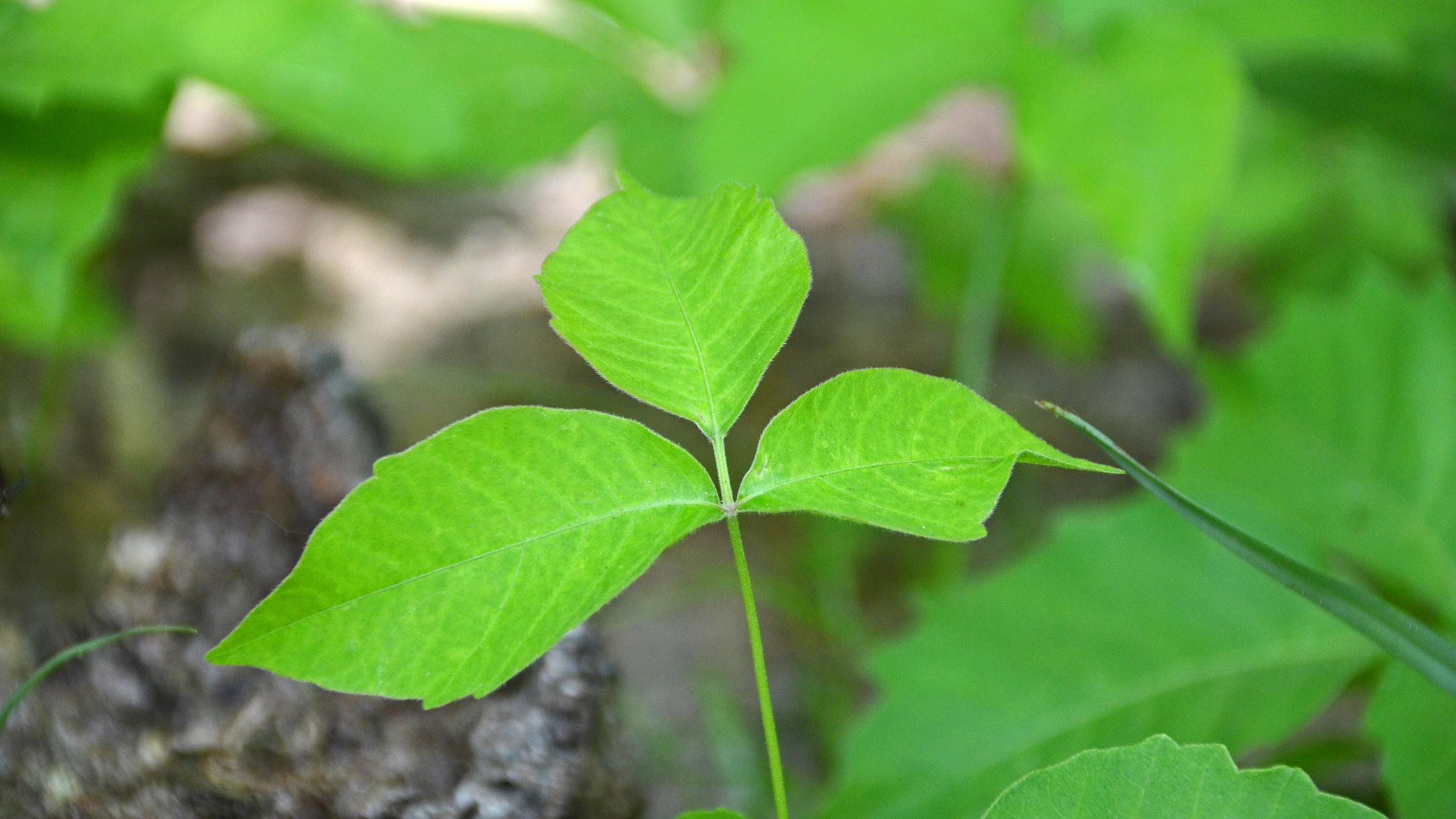
Poison ivy. Photo © Lisa Ballard Don’t kid yourself. According to the American Academy of Dermatology, about 50 million people get the rash each year, making it one of the most-common allergies in the United States.
If you don’t get it the first time you touch it, you will probably get it the second time. Unfortunately, the body doesn’t build immunity. On the contrary, the more times you are exposed to it, the worse the break out. The rash may appear in only a couple of hours on veteran poison ivy sufferers. Among first-timers, it can take up to 10 days.
Urushiol oil binds to the skin in 20 minutes or less, and it’s concentrated stuff. Only one nanogram can trigger the rash. (The average human exposure is around 100 nanograms.) But there’s hope! If you know you’ve touched poison ivy and you immediately wash the exposed area with soap and water, your odds of getting the rash greatly decrease.
If you think a large area of your body may have touched it, take a shower, not a bath. The oil can rise to the top of your bathwater and get on more of your body. If you’re in the backcountry, rinse the area in moving water. Don’t forget to wash your clothes and gear, too.
-
Myth #5: When poison ivy dies, it can’t cause the rash.
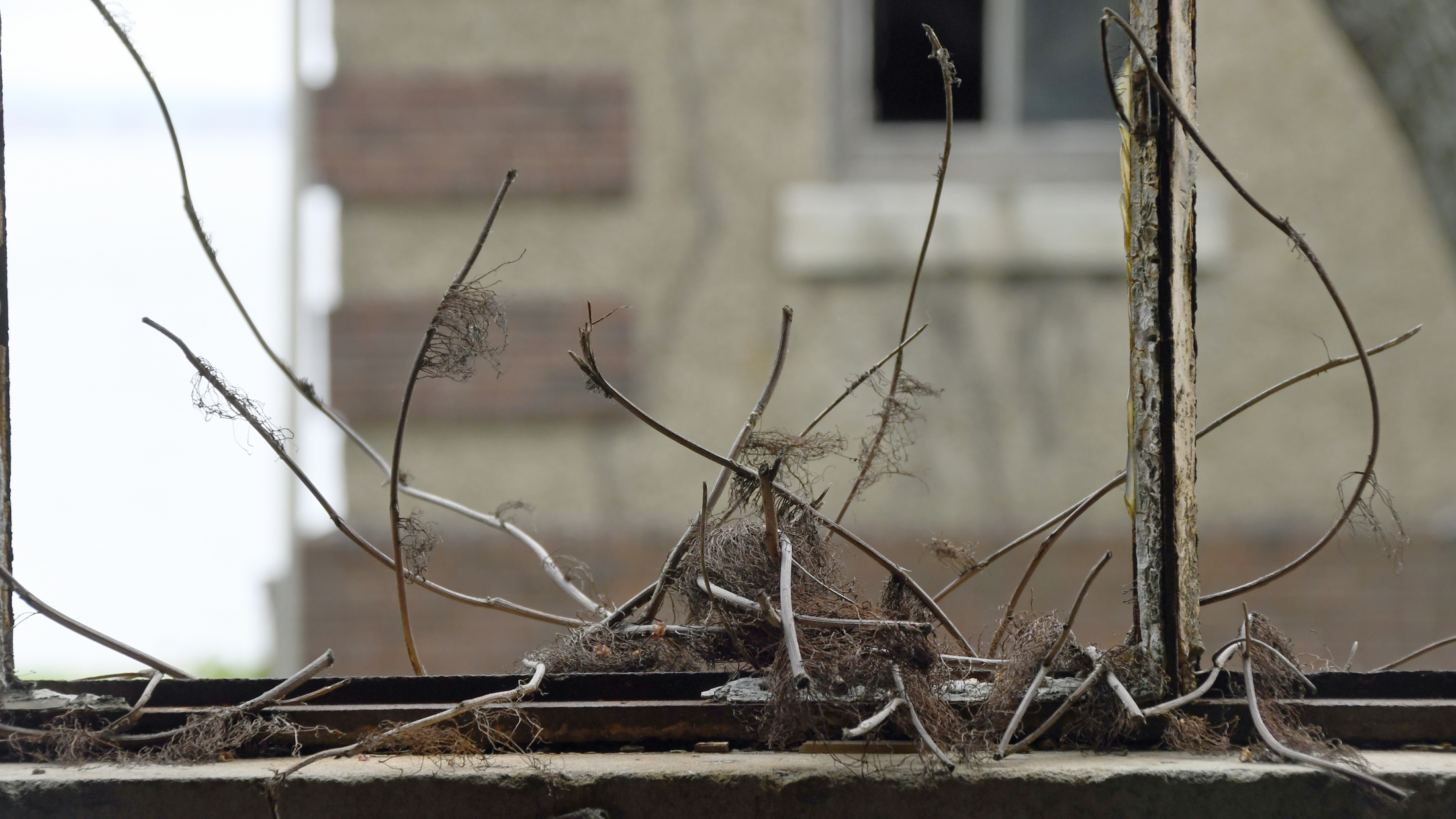
Poison ivy vine on window. Photo © Lisa Ballard Urushiol oil is durable stuff. While the plant won’t produce more of it after it dies, the oil can linger for five or more years. You’ll need a quick trip to the emergency room if you unwittingly burn it in a pile of dead wood, inhaling the smoke, which can carry urushiol oil into your lungs. This nasty toxin can also become airborne from wildfires and lawnmowers.
-
Myth #6: Climate change has no impact on poison ivy.
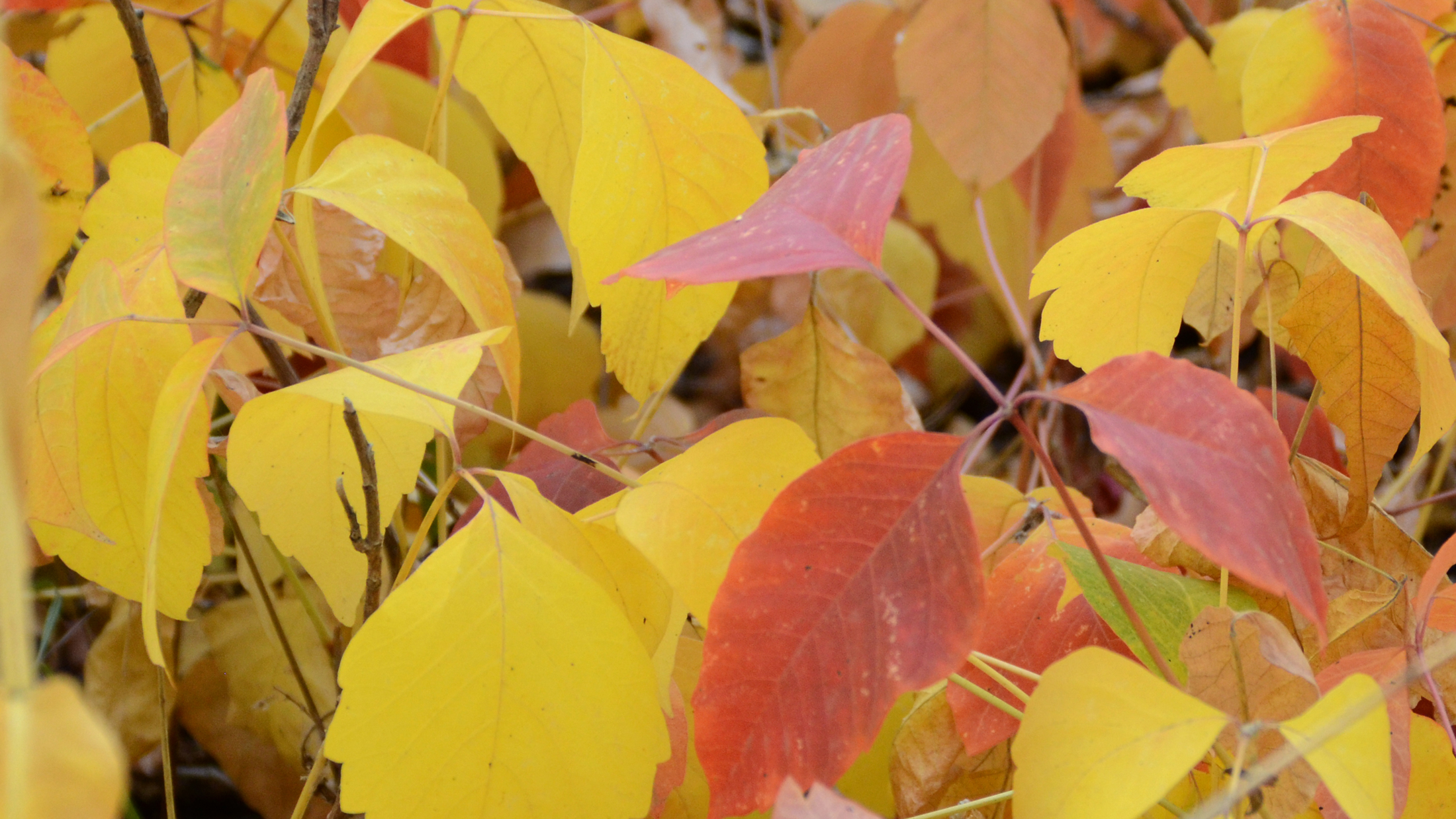
Poison ivy. Photo © Lisa Ballard Historically, backcountry travelers believed they were safe from poison ivy at elevations above 2,500 feet in the East and 4,000 feet in the West, and in desert climates. However, I live at 5,500 feet in the Beartooth Mountains near Yellowstone National Park and see it when I hike. I’ve also seen it in the arid Grand Canyon after a rare, heavy rain storm caused dormant poison ivy to emerge on sandbars.
Poison ivy is creeping higher and drier, but perhaps more unsettling is the fact that it’s getting more potent. According to a 2006 study published by the U.S. Department of Agriculture in Proceedings of the National Academy of Sciences, poison ivy leaves are increasing in size and are coated with more and stronger urushiol oil as levels of carbon dioxide increase globally.
I don’t mean to be an alarmist, just more observant. Whether doing yard work, jogging down a country lane or trekking in the mountains, you can bet I’ll be checking the flora before blithely blundering through it.
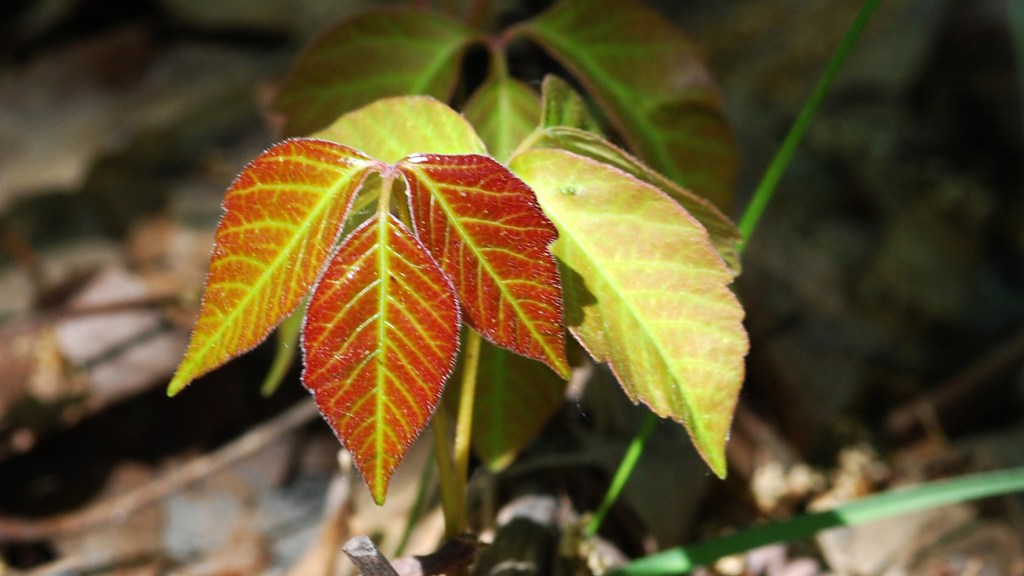



Thank you for the review and myth busters…Guess I have been lucky. Will NOW become vigilant and honor the “leaves of three…”
A rather famous pathologist told me one of the worst autopsies he ever did was on a body where the person had sat by a fire and inhaled poison ivy branches and stems. He described the lungs which I will not do here. Just be careful if you collect brush for fires.
Effectiveness of Impatiens “Touch me Not’ sap in treating Poison Ivy exposure is more than legend. What is the biochemistry going on with this stuff?
Man that’s a real ugly problem.Now I have to be more careful when burning yard waste. Thank you for this article.
Another relatively newcomer to the poison plant list in the US is giant hogweed. It’s an invasive plant from southwest Asia. It’s much worse than poison ivy, oak or sumac. The plant can burn, scar and even blind a person. It can leave the skin with permanent discoloration as well. According the the DEC it currently grows in New York, Pennsylvania, Ohio, Maryland, Oregon, Washington, Michigan, Virginia, Vermont, New Hampshire and Maine.
In my experience a sure fire cure for poison ivy rash on the skin is to rub the affected area with the mushed end of a stalk of rhubarb. The astringent rhubarb juice wipes out the poison ivy oil and stops the rash overnight. I keep a clump of rhubarb growing in my garden for just that reason. Unfortunately, this does not work for poison parsnip. Not sure about poison oak or poison sumac. Many years ago this poison ivy cure was passed on to my land surveyor brother (who often encountered poison ivy in his work) by a wise elder lady of the Adirondack Mountains of New York State. So grow some rhubarb to have on hand if needed. This cure really does work.
When I lived on the East Coast, my mother taught me to rub Poison Oak rashes with Jewelweed. Jewelweed grows near water in a damp soil environment. It has pretty flowers so you can see it. I used Jewelweed several times and each time it worked. I live on the West Coast now and I am surprised that I am not as allergic to Poison Oak, although I did get a little rash sometimes. I found out that there is a plant that resembles Poison Oak, but has red or orange berries, which are edible, and the vines were used by First Americans to weave baskets.
Very good article!
I find a few drops of tea tree oil in a small amount of water (1or 2 teaspoons) rubbed on itchy spots or rash work very well to get rid of poison ivy! But if you know where the oil might be on your skin rinse with rubbing alcohol then wash with soap and water it stop the rash before it starts!!!
A good article.
I suffered from poison ivy rash when I was about 12 years old back in the 60’s as did my best friend. I will vouch for the fact that you can get it from the smoke when it is being burned unknowingly mixed in with fall leaves. We together, burned the leaves.
It was a severe case and landed me in the doctor’s office. My face was covered and some other parts of my body but mostly my face.
I remember walking into the doctor’s office and causing a small child to cry because he was afraid. I looked awful. To this day, I believe I helped my rash to get even worse as it was Halloween time and we covered our heads with sheets to go Trick n Treating. Perspiration and the heat from having it over my face most likely contributed.
When I got older and thought back about it, how dumb was it to “cover” the frightening face when it was the perfect time to show it!
I have never gotten poison ivy again. Poison Sumac, yes but not Poison Ivy!
After suffering through several bouts (one in childhood) using calamine, I have had much more success with the new over-the-counter anti- histamine gel.
Poison ivy is part of my life, as a Minnesotan, and someone who hikes and camps and gardens and spends time outdoors.
Washing with soap and water is a good practice. It’s not always possible to know that you’ve been exposed, though, until it shows up, in the early stages as little blisters.
Getting anti-histamine gel on the skin at the stage short circuits the whole process, It literally arrests the blisters and then they just disappear after a day or so. I keep the gel with me all the time whenever I am outdoors.
Works great for mosquito bites, too.
As a kid, I remember being put into a tub and lathered with Calamine lotion when poison ivy blisters first appeared. One of the worst places to get it is between your fingers!
Now, some 50 years later, I yank and pull and tug at the vines, leaves with bare hands and bare legs and hardly get any reaction. I do throw on some calamine lotion at first itching but how come I’m not very allergic anymore? Age?
Good question. Most people have worse breakouts with each exposure. Are you sure those vines are poison ivy and not something else? If you wash within an hour or two after yanking them, you’re probably washing off the urushiol oil before it binds to your skin and causes the rash.
Noted Iowa State botanist Howard Loomis repeatedly taught that”All dogmatic statements are false!” I am reminded of that guidance when I read, here and elsewhere, that there is no sustained immunity to poison ivy and its kin. Maybe not, but in my family , through four generations beginning with my father , through his two children ( and I am near 80), my one child , and my three grandchildren, despite rural residence, vocation, and avocation, there has never been one case of poison ivy rash. Given the remarkable diversity of human physiological response, it would be most amazing if there were not some immune individuals and a heritable immunity. .
In March, few years back, took my dog to our fav. creek. It was warm for that time of yr. I always wear long sleeves, pants & boots. Later that night in MY PJ’s, Jack put his paw on my thigh. Next morning I had a paw print rash on my leg that lasted until summer!
The best thing to do if you get around poison ivy/oak is to wash with COLD water. That will keep the oil from going into the pores.
The best thing to do if you get a giant rash (which means the oil has already merged with the skin and can’t be washed away) from poison ivy is to heat it up either in warm water or with a hair drier.
The hair drier is easier, just don’t use high heat as you don’t want to burn yourself in the process. You basically are getting the area hot right at the point of burning. The heat causes all the cells to release the histamine. It’s is insanely euphoric. If it’s a large enough rash, you will feel the intense feeling from the head to toes, literally. The thing is, once the cells release all their histamine, it can take 8 hours to refill which means you can go 8 hours with no itching.
Anti-histamine ointments don’t to anything for me but the hair dryer is 8 hours of peace.
The poisonwood tree deserves mention, along with the manchineel. They both occur in Everglades National Park. Poisonwood can be found in slightly elevated areas like pine rockland and roadways. Manchineel is usually in areas only a hiker might access. There are a few at water’s edge in the canal used by the canoe rental facility at Flamingo.